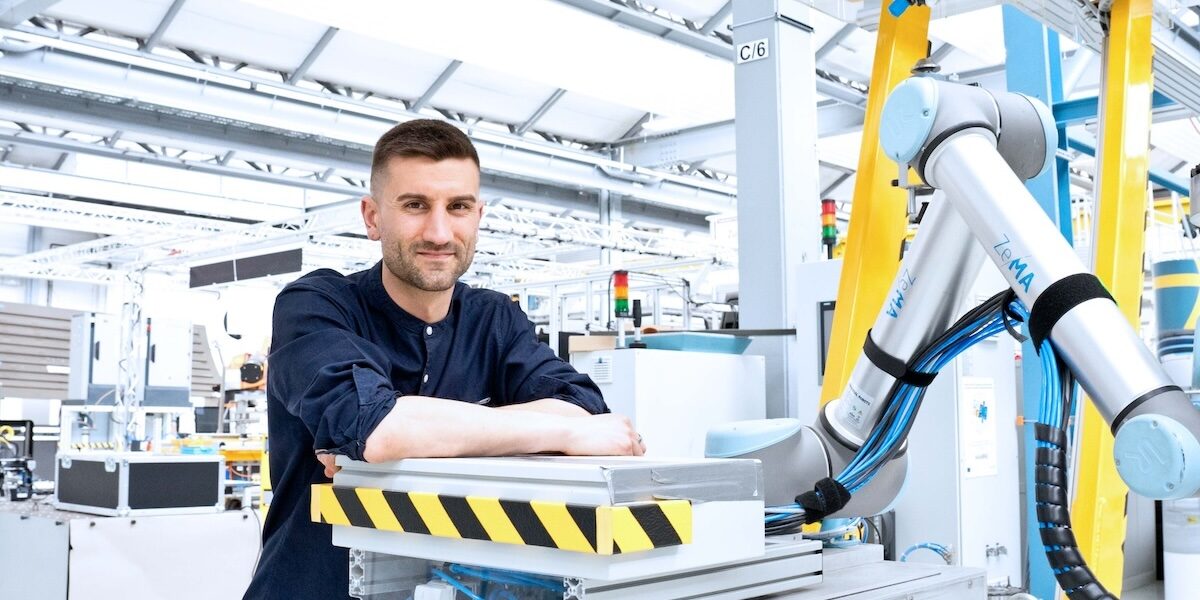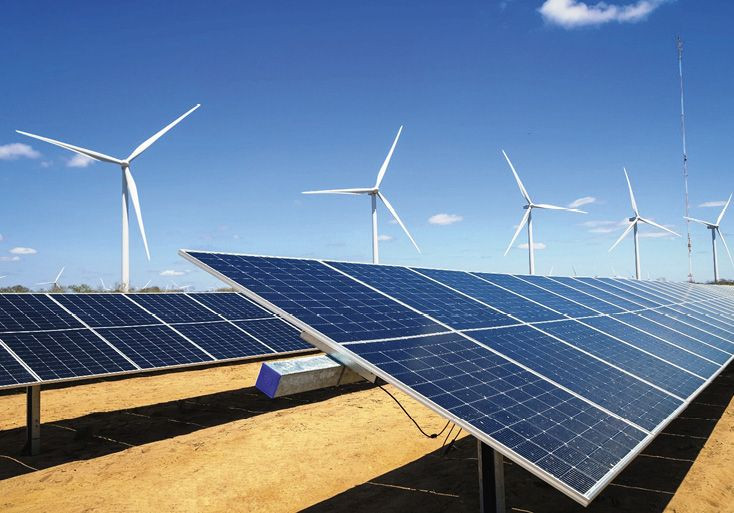Brazil’s rapid growth of renewable energy has not been matched by transmission and distribution infrastructure. Connection restrictions for both ‘distributed’ and centralized generation locations are causing companies to adopt new strategies to maintain expansion, reports pv magazine Brazil‘S Livia Neves.
Electric grid queuing in Brazil offers new opportunities for energy storage and hybrid systems and opens up new energy business models. Renewable energy companies including Auren, Statkraft and Casa dos Ventos are adding solar and batteries to their large-scale wind sites to utilize existing energy transmission capacity.
Batteries are also gaining ground in small-scale, distributed generation in response to connection shortages on the utility-operated low-voltage distribution network and power outages in states including São Paulo. Furthermore, companies such as France’s GreenYellow are taking a ‘zero-grid’ approach, focusing on generation at the point of consumption, without injection into the electricity grid. GreenYellow has previously added more than 200 MW of remote solar capacity to the grid.
Casa dos Ventos told the story pv magazine Brazil it will begin construction of 300 MW of solar in Bahia in 2024, adding 200 MW to the under-construction 553 MW Babilônia Centro wind site and 100 MW to the operational, 360 MW Babilônia Sul wind farm. In May 2024, solar development engineering manager Guilherme Castro said the solar plants will share the transmission system connection with the turbines, and access will be granted in April 2024.
These plants will supply energy under the ‘autoprodução’, or self-production model, where the end user becomes a partner in the project and receives discounts on certain taxes and on transmission system costs. Although self-production of electricity is more expensive than current low wholesale prices, it is less volatile and the scheme makes new sites for renewable energy sources more viable in the low electricity price environment.
Customizing hybrid plants
The newly hybridized Casa dos Ventos sites will have to adhere to the energy transmission agreements signed for the original wind power plants, increasing the risk of curtailing excess energy generated. “If there is a limit, there can of course be curtailment, so the sizing of the solar energy is a sensitive point,” says technical manager Castro.
Properly sized solar can aid wind energy generation, for example by controlling reactive energy with solar inverters. “In the case of associated plants, if the system operator imposes a restriction, it is easier to limit the solar energy and keep the wind, because wind turbines have mechanical inertia,” Castro said. That opens up a market for solar companies, he added. “One of the [solar] The sector’s biggest pain points are the difficulty in accessing the electricity grid. For solar energy companies that do not have wind expertise, looking for a wind partner that is not yet looking at this could be an opportunity.”
Shading from wind turbines is less of a problem than in other countries due to the availability of land in Brazil, and Castro said Casa dos Ventos sites will achieve lower overload between the DC generating capacity of the panels and the AC capacity of their inverters. . He mentioned an “overload ratio” of “between 1:1 and 1:15, depending on the value of the dollar and the panel. We’ve seen 20%, or 1:2. It is cheaper if it is shortened.”
Energy storage
Curbing excess power is cheaper than batteries, Castro said. “The battery could help to provide empty energy, but according to our analysis it is still not worth optimizing at the current battery price. But there is an acceleration in cost reduction that could make the alternative viable.”
Norwegian developer Statkraft will include batteries in its BRL926 million ($181 million) solar hybridization of the Ventos de Santa Eugênia and Morro do Cruzeiro wind farms in Bahia. With a total generation capacity of 275 MW, construction of the latter should begin in June 2024 and end in August 2025. Construction will start in Ventos de Santa Eugênia in July 2024 and end in November 2025.
In November 2023, Auren Energia opened its 48.1 MW Sol do Piauí solar power plant, next to the 206 MW Ventos do Piauí wind farm, which has been in operation since 2021. The BRL 255 million hybridization project, in Curral Novo, Piauí, was the first approved by state body, the Agência Nacional de Energia Elétrica (Aneel). In 2021, Aneel introduced hybrid factory permits – with shared licenses – and associated factory permits, with separate licenses but allowing new installations to be linked to assets.
Brazil’s lithium energy storage production chain
Battery cells, which are not currently produced in Brazil, are the “missing link” in the supply chain of the world’s fifth-largest lithium producer. The country assembles battery packs and systems, and automakers have electric vehicle (EV) lines. The Fuel for the Future bill, to decarbonize Brazil’s roads, should also boost the mineral sector. More than 1 million tons of Brazilian lithium – in the states of Minas Gerais, Pernambuco, Rio Grande do Norte and Ceará – constitutes the seventh largest reserve in the world. Demand for electric vehicles is expected to increase the 2,200 tons of lithium Brazil produces annually. Sigma Lithium started exporting to Chinese battery manufacturers in 2023. Meanwhile, automakers including BYD, Volkswagen and Marcopolo are assembling heavy-duty EVs in Brazil with imported Chinese batteries. In February 2024, Brazil’s Minister of Development, Industry, Trade and Services Uallace Moreira said that green industrialization policies should attract more links of the battery supply chain to Brazil. The federal government announced the New Industry Brazil program in January 2024, including a boost for domestic production of lithium battery cells. “We clearly see that Brazil, even from a geopolitical and strategic perspective, needs to have a cell factory,” said Marcelo Rodrigues, vice president of business and innovation at stationary storage company UCB Power. “To do this, we need to unlock demand.” In the Manaus Free Trade Zone, in Amazonas, UCB produces lithium batteries by integrating the storage system electronics with imported battery cells. The company has supplied batteries for 42,000 systems under a federal government universal energy program for isolated communities in the Amazon – amounting to between 150 MWh and 200 MWh. You.On and WEG also assemble battery systems locally. Together with China’s Huawei and TBEA, they are monitoring demand for up to 2 GWh of projects that want to participate in a capacity reserve auction that the federal government is preparing, indicating the market’s interest in investing in battery energy storage systems (BESS).
Zero grid
A surge in applications for small solar panels was triggered by a deadline for a program that would give producers a similar credit for excess energy injected into the grid. That regulation applied to systems up to 5 MW in size, although the vast majority of such projects have generation capacity up to 75 kW. However, many of the requests were rejected by electricity distribution companies, which claimed that reversing the flow of electricity in areas with many distributed generation systems could cause overvoltage in the electricity grid.
In April 2024, GreenYellow announced a new strategy for its distributed generation segment in Brazil, to adapt to the new conditions. Until then, the company relied on the model of remote self-consumption, which involved building power stations away from the place of consumption and using the electricity distribution network. GreenYellow installed more than 200 MW of such projects in Brazil.
According to GreenYellow, the changing nature of regulations has proven to be more damaging to remote generation sites than to self-consumption facilities. The French company believes that rooftop generation for the commercial and industrial sectors has great potential in its zero-grid model, which serves electricity users in the free and tied market and does not involve use of the electricity grid.
GreenYellow aims to close 30 MW of rooftop capacity in Brazil by the end of 2024, using an equipment rental model. Through an agreement signed with Brazilian installer Enerzee, GreenYellow will handle everything from the total investment to make projects viable to managing the operation and maintenance of the arrays. Enerzee will be responsible for installing and delivering the equipment. Both companies will work together to generate customers.
This content is copyrighted and may not be reused. If you would like to collaborate with us and reuse some of our content, please contact: editors@pv-magazine.com.
Popular content



